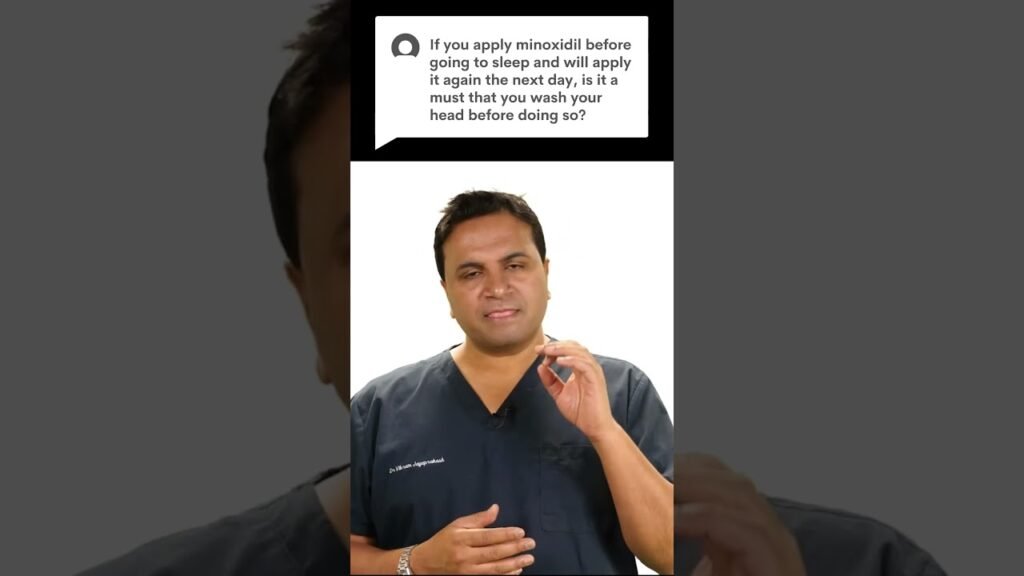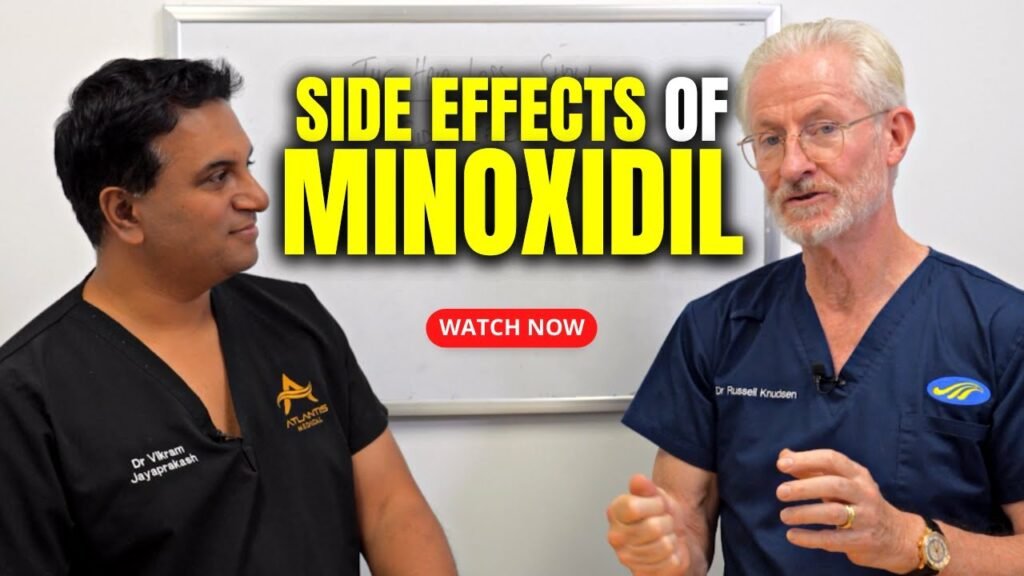What is Minoxidil and How Does It Work?
Minoxidil is a topical medication primarily used to stimulate hair growth and slow down balding. Initially developed as an oral drug for high blood pressure, it was discovered that one of its side effects was hair growth, which led to its development as a topical treatment for hair loss. Available in various forms such as foams, solutions, and shampoos, Minoxidil is most commonly used to treat androgenetic alopecia, also known as male or female pattern baldness.
How Minoxidil Works
Minoxidil works by revitalizing hair follicles, increasing their size, and extending the growth phase of hair. It is believed to enhance blood flow to the hair follicles by widening blood vessels, thereby improving the supply of essential nutrients and oxygen. This improved circulation helps to strengthen existing hair and stimulate the growth of new hair strands. Users typically apply the product directly to the scalp, where it penetrates the skin to reach the hair follicles. Regular use over several months is often necessary to see noticeable results.
Application and Effectiveness
When using Minoxidil, consistency is key. It is generally applied twice daily, and users should ensure that the scalp is clean and dry before application. While some individuals may start to see results within three to six months, it is important to note that hair growth is a gradual process. The effectiveness of Minoxidil can vary from person to person, and it may not work for everyone. It is also crucial to continue using the product to maintain results, as stopping the treatment could lead to the loss of newly regrown hair.
Understanding the Connection Between Minoxidil and Dry Skin
Minoxidil is a widely used topical treatment for hair loss, but many users report experiencing dry skin as a side effect. Understanding the connection between minoxidil and dry skin can help users manage this common concern more effectively. When applied to the scalp, minoxidil increases blood flow and stimulates hair follicles, promoting hair growth. However, its alcohol-based formulation can lead to moisture loss, resulting in dryness and irritation for some individuals.
How Minoxidil Causes Dry Skin
The primary reason minoxidil can cause dry skin is its vehicle solution, which often contains alcohol or propylene glycol. These ingredients help dissolve the active compound and facilitate absorption into the scalp. However, they can also strip the skin of its natural oils, leading to dryness and flakiness. Additionally, frequent application of minoxidil may disrupt the skin barrier, making it more susceptible to environmental factors that exacerbate dryness.
To minimize the impact of dry skin while using minoxidil, consider incorporating a gentle, hydrating moisturizer into your skincare routine. Look for products that are free of fragrances and harsh chemicals, as these can further irritate sensitive skin. Applying the moisturizer after minoxidil has dried can help restore moisture without interfering with the medications effectiveness. Moreover, reducing the frequency of minoxidil application, with the guidance of a healthcare professional, may also alleviate dryness for some users.
How to Use Minoxidil Safely as a Beginner
Starting a new hair treatment can be daunting, especially with products like Minoxidil that require careful application and adherence to specific guidelines. As a beginner, its crucial to familiarize yourself with the proper usage techniques to maximize benefits and minimize potential side effects. Begin by reading the instructions provided with your Minoxidil product thoroughly. Most products are available in topical liquid or foam form, and understanding the specific application process for your chosen type is essential.
Step-by-Step Application Process
To use Minoxidil safely, start by ensuring your scalp is clean and dry. Apply the recommended amount, usually around 1 ml, directly onto the scalp in the area experiencing hair thinning. If youre using the liquid form, utilize the dropper provided, while the foam can be applied with your fingers. Gently massage the solution into your scalp to ensure even distribution. Its important not to exceed the recommended dosage as this wont increase effectiveness and could lead to unwanted side effects. Wash your hands thoroughly after application to avoid transferring the product to other areas of your body.
Important Safety Tips for Beginners
Consistency is key when using Minoxidil. Apply it twice daily, or as directed by your healthcare provider, to maintain steady progress. Avoid washing your hair immediately after application; allow at least 4 hours for the product to be fully absorbed into the scalp. Additionally, be patient, as noticeable results can take several months to appear. Beginners should monitor for any adverse reactions such as scalp irritation or unwanted hair growth on other body parts, and consult a healthcare professional if these occur. By adhering to these safety tips, you can use Minoxidil effectively as part of your hair regrowth journey.
Effective Tips to Prevent and Treat Dry Skin Caused by Minoxidil
When using Minoxidil for hair regrowth, one common side effect some users experience is dry skin. Understanding how to manage this condition can enhance your treatment experience and maintain skin health. Hydration is key when dealing with dry skin caused by Minoxidil. Regularly applying a high-quality, fragrance-free moisturizer can help lock in moisture and create a protective barrier on your skin. Look for moisturizers containing hyaluronic acid or ceramides, which are known for their excellent hydrating properties. Applying moisturizer immediately after using Minoxidil can minimize dryness.
Another effective approach to prevent and treat dry skin is to adjust the frequency and amount of Minoxidil application. Sometimes, the skins reaction can be due to overuse. If you notice excessive dryness, consider reducing the frequency of application or using a lower concentration of the product. Always consult with a healthcare provider before making changes to your regimen to ensure you are still receiving the desired benefits of the treatment without compromising your skins health.
In addition to topical solutions, lifestyle modifications can significantly impact skin hydration. Increasing your water intake ensures your skin stays hydrated from the inside out. Incorporating foods rich in omega-3 fatty acids, like salmon and flaxseeds, can also support skin health. Finally, consider using a humidifier in your home, especially during dry months, to maintain optimal moisture levels in the air, which can alleviate skin dryness. By combining these strategies, you can effectively manage dry skin while continuing your Minoxidil treatment.
Common Questions About Minoxidil and Dry Skin Answered
One of the most frequently asked questions is, «Can minoxidil cause dry skin?» Minoxidil is a popular topical treatment for hair loss, but it can sometimes lead to dryness as a side effect. This occurs because minoxidil contains alcohol-based solutions that can strip moisture from the skin, leading to dryness, flaking, or even mild irritation. Its important to follow the application instructions carefully and consider using a moisturizer to mitigate these effects.
Another common query is, «How can I manage dry skin caused by minoxidil?» If you experience dry skin, there are several strategies you can employ to alleviate discomfort. Consider using a gentle, fragrance-free moisturizer on the affected areas after the minoxidil has dried completely. Additionally, opting for a hydrating cleanser and avoiding hot showers can help maintain skin moisture. For some users, switching to a foam formulation of minoxidil, which is less likely to cause dryness, can also be beneficial.
Lastly, people often wonder, «Should I stop using minoxidil if I develop dry skin?» While dry skin can be an inconvenient side effect, it doesnt necessarily mean you need to discontinue use. If the dryness is mild, managing it with skincare adjustments can allow you to continue benefiting from minoxidils hair growth properties. However, if the dryness leads to severe irritation or discomfort, consulting with a healthcare professional for personalized advice is recommended. They may suggest an alternative treatment plan or adjustments to your current regimen.


